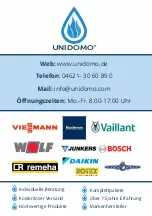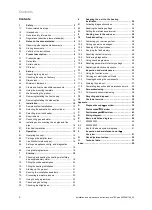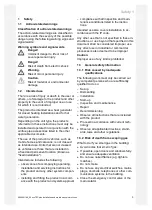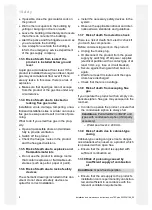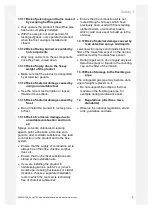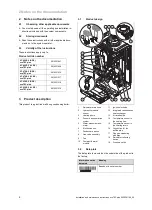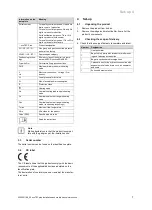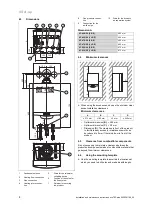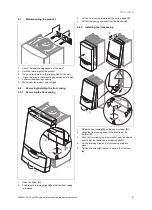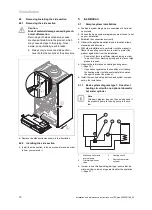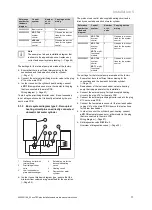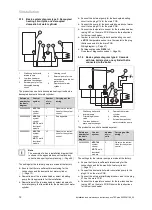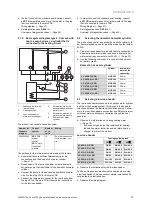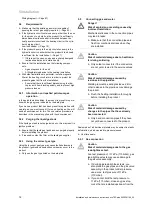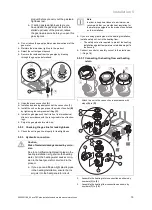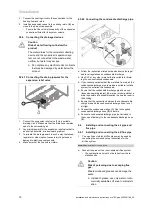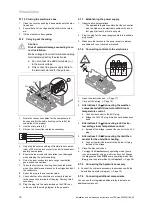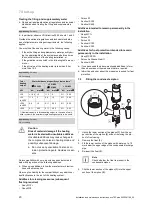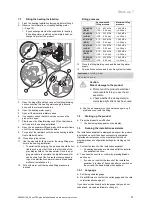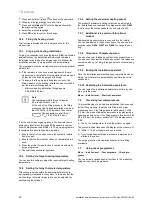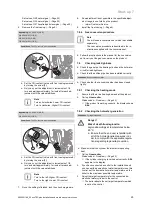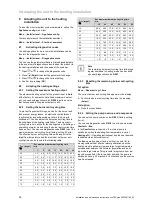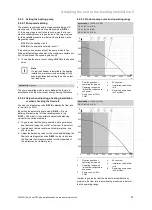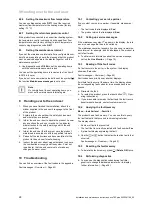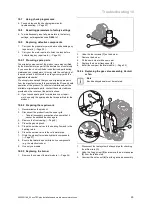
Installation 5
0020261188_00 ecoTEC plus Installation and maintenance instructions
15
product before you carry out the gas leak-
tightness test.
▶
If, during gas leak-tightness tests, you
have closed the gas stopcock that is in-
stalled upstream of the product, relieve
the gas line pressure before you open this
gas stopcock.
▶
Do not reduce the gas pipe dimension downstream of the
gas meter.
▶
Maintain the dimension right up to the product.
▶
Select the correct gas stopcock.
▶
Remove the residues from the gas pipe by blowing
through the gas pipe beforehand.
A
B
1
C
▶
Undo the press connection
(A)
.
▶
Install an approved gas stopcock at the connection
(1)
.
▶
Install the unit on the gas pipe at the product's outlet
(B)
by tightening the compression fitting
(C)
.
▶
Install the gas pipe such that it is free from mechanical
stress in accordance with the recognised rules of techno-
logy.
▶
Purge the gas pipe before start-up.
5.5.2
Checking the gas line for leak-tightness
▶
Check the entire gas line properly for leak-tightness.
5.5.3
Hydraulic connection
Caution.
Risk of material damage caused by corro-
sion
Due to non-diffusion-tight plastic pipes in the
heating installation, air gets into the heating
water. Air in the heating water causes corro-
sion in the heat generator circuit and in the
product.
▶
If you use non-diffusion-tight plastic pipes
in the heating installation, ensure that no
air gets into the heat generator circuit.
Note
In order to keep heat losses to a minimum, we
recommend that you provide heat insulation for
the water pipe spigots on the product's outlet and
on the installation.
▶
If you are using plastic pipes in the heating installation,
install a safety cut-out in the heating flow.
–
The safety cut-out is required to protect the heating
installation against temperature-related damage if a
fault occurs.
▶
Connect a control or a safety cut-out to the electronics.
(
→
Page 18)
5.5.3.1 Connecting the heating flow and heating
return
A
B
C
D
1.
Attach the nut to the connection in accordance with
steps
(A)
to
(D)
.
1
10
11
12
9
7
8
2
3
4
5
6
2.
Assemble the heating return connection as shown by
numbers
(1)
to
(6)
.
3.
Assemble the heating flow connection as shown by
numbers
(7)
to
(12)
.

